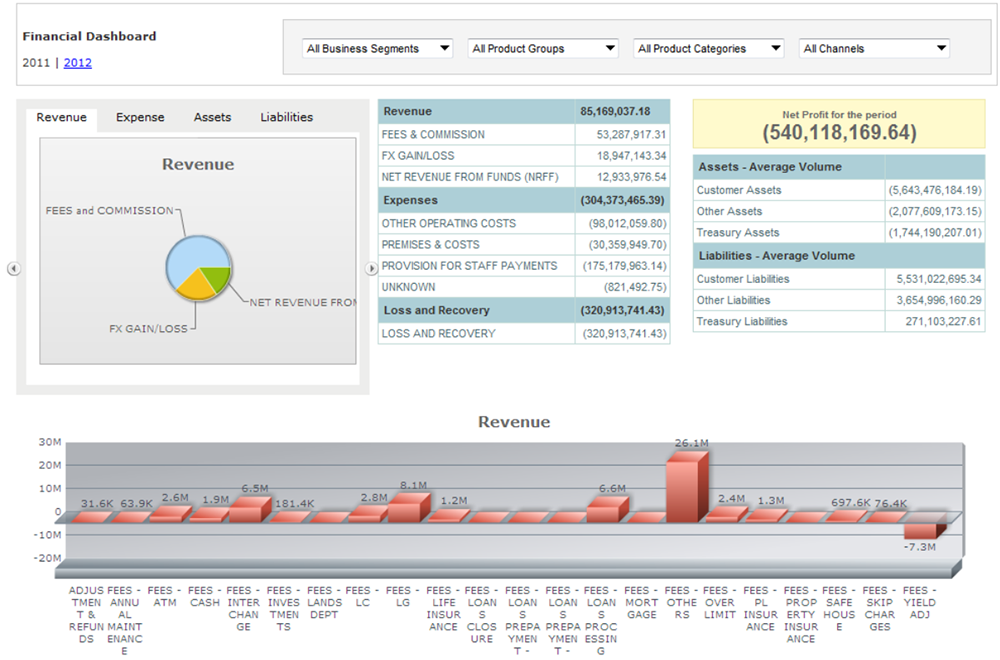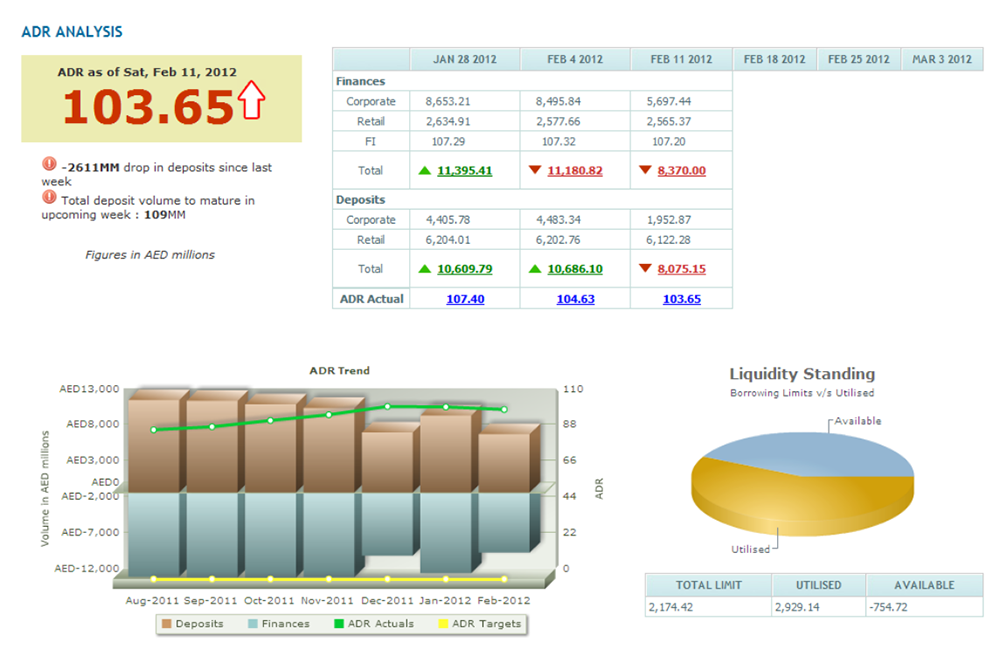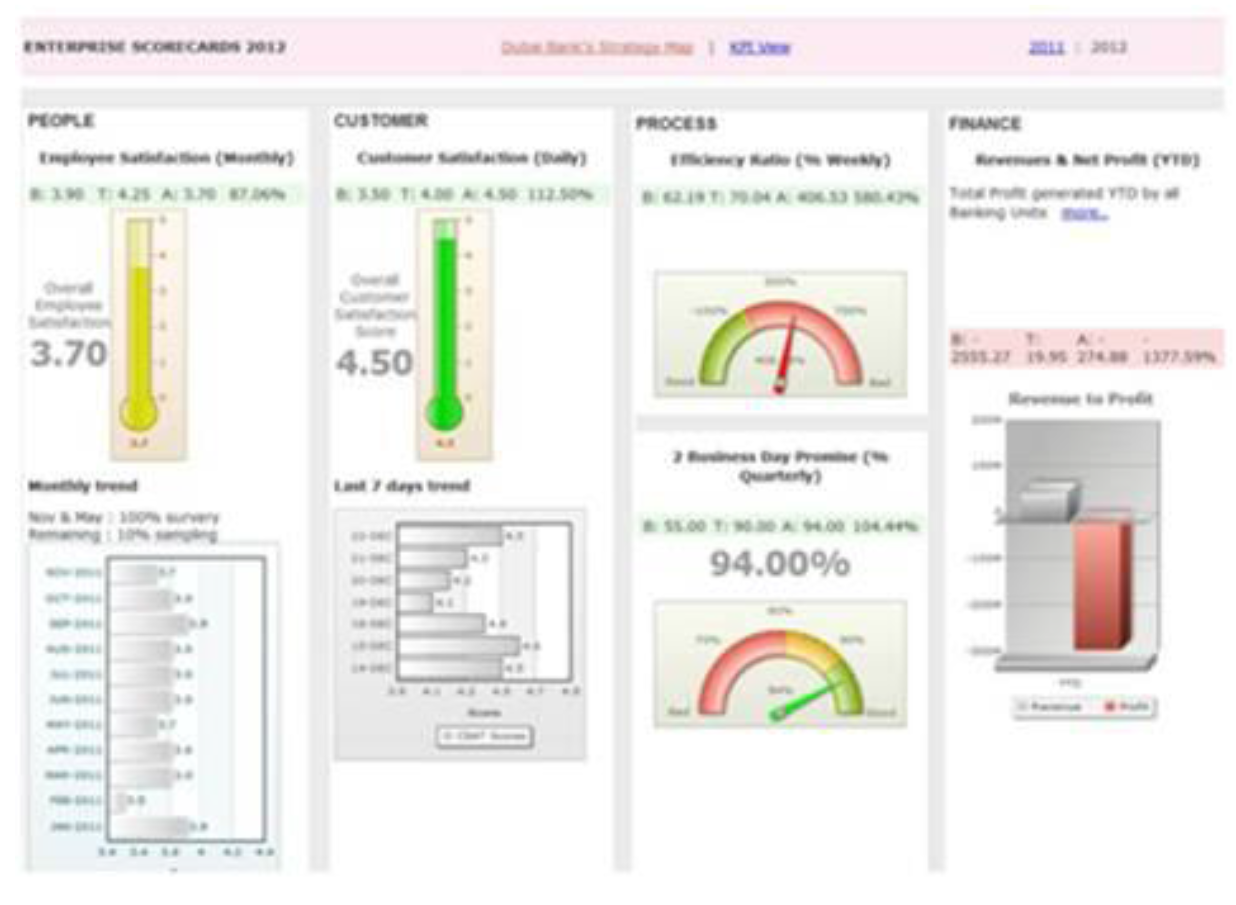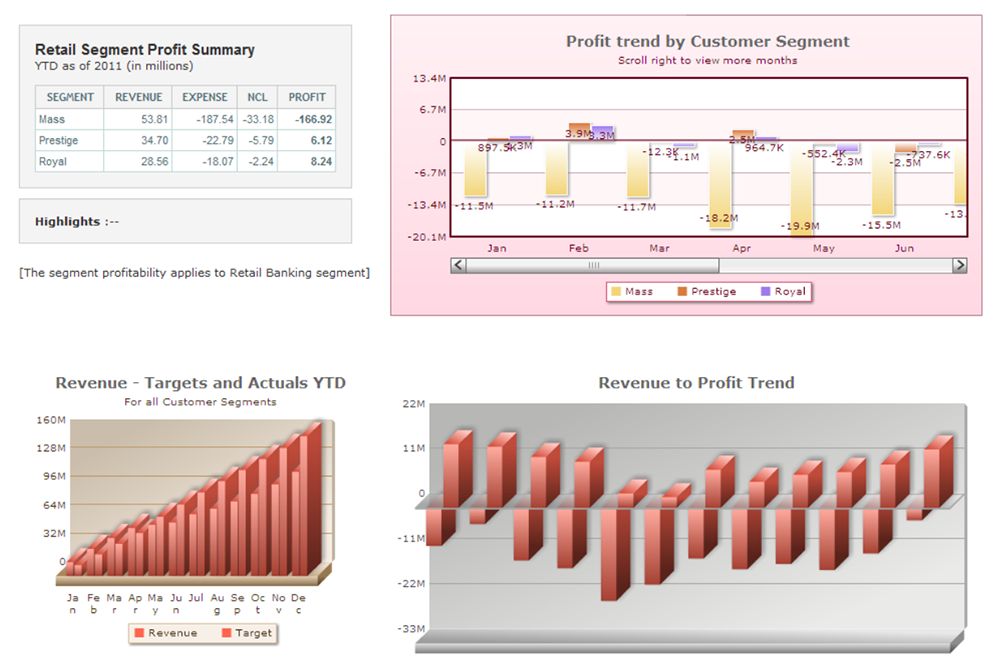Information Architecture
Dubai Bank's Business Intelligence System
Project Objective
The system aims to provide a robust and centralized Business Performance Solution to facilitate data integration, data quality, data warehousing, master data management, reporting and analytics. The BI vision is to be the Bank's premiere data synthesizer. Turning information into action and driving business decisions by both the Bank's internal stakeholders, and the bank's customer facing teams.
Solution
BIS maintains and is supported by a flexible and structured information architecture that can link customer and account information across lines of business, functional areas and branches to provide a composite customer and portfolio view across all it's business segments and branches. By taking advantage of this view and using advanced analytics techniques, the bank can detect patterns, relationships and trends.
Strategy
The diagram represented the strategy planned for the maturity of the Business Intelligence System in Dubai Bank over the span of 5 years
The Business Intelligence system was implemented in alignment with the then strategy of Dubai Bank as shown below
Product
The BI system was used for analytical reporting, operational reporting and metadata management
Analytical reporting
- Profitability
- Branch Reporting
- State of Business Reports
- Activity Monitoring
- Executive Dashboards
- Enterprise Scorecards
- Cross Product Penetration
- Productivity Tracking
- Acquisition & Retention Analysis
- Target market & segmentation
Operational Reporting
- Account balances and average volume of accounts
- Account status changes
- Payment & delinquency behaviors
- Product & business segment movements
- Static changes of account
- PTD & YTD Accrued interests and profit payments
- Profit rate changes
Metadata management
The metadata layer is the most critical component of Dubai Bank's BI. In Dubai Bank's perspective, the term 'metadata' refers to business metadata. It consists of a unified glossary of all business terminologies and entities that establish a common understanding and consistent definition of data and business vocabulary. It is managed by business users through BI metadata tool.
Browse through some of the sample dashboards from Dubai Bank's BI digital product below by clicking on the arrows




Governance
As part of the implementation, a Business Intelligence Governance Committee was set up (BIGC). BI is governed by BIGC, formed for the sole purpose of evaluating the BI needs of the bank and making related decisions. All major stakeholders - Information Technology, Financial Control, Risk Management, Corporate Banking and Retail Banking including the branches who have constant BI needs is represented in the BIGC.
There are two types of users
- Operational Users - Executives, managers, operational clerks and analysts who access tailored reports and dashboards from BI.
- Power Users - These are the super users, analytic modelers and advanced business analysts who can produce adhoc reports provided analytical or report authoring tools.
Approach
Following were the design principles that were employed.
- Efficiency. A single copy of a dimension (e.g., time, product) involves less maintenance
- Consistency. By definition, a dimension means the same thing everywhere it‘s used.
- Ease of use. Once it get used to what the dimension looks like, how it‘s structured, what it
- represents, and its content, writing code against it is almost effortless.
- Expandability. A dimension decodes every fact table in the enterprise data warehouse that it‘s associated with. When a new fact table is introduced to the data warehouse, linking the fact table to the existing dimensions to form a new cube is straightforward and expands and extends the reporting capabilities of the enterprise data warehouse.
- Standards enforcement. Once everyone (IT and user community) has come to consensus on the architecture, meaning, and data content of a dimension, the rest of the organization will have to use the design, and through frequent use these dimensions will become the de facto standard.
- Reporting enhancement. While writing reports against a data warehouse that‘s built on bus architecture, users can readily access customer, product, accounts and profits data and know that everyone is getting the same information across the board.
Below is the high level logical presentation of data marts
Data Architecture
The Data warehouse is designed in star schema where the fact table holds main data in aggregated form and is being connected to each dimension table. Fact tables are in third normal form where dimensions are in second normal form.
Security Architecture
The Business Process Driven Security Framework in BI authorizes all operational reports (SSRS and Dashboards) and power users are authorized through Windows Active Directory Roles. The application and database segments are segregated differently.
Technology Architecture
The active-passive mode of BI presentation servers provides high availability and load balancing which requires manual fail over between active and passive nodes. The cluster configuration for BI database servers provide the automated fail over strategy.
Connectivity, Archival, Backup & Restore and Monitoring
The connectivity to the database is only facilitated through application layer or servers. The BI portal uses ADO.Net drivers and Cognos portal uses JDBC drivers to establish connection with database. The data purging has been automated as a part of Warehouse Management System which will move the data to the archival database on FIFO 24 month‘s cycle.
Support Services
New request lifecycle process and an incident management lifecycle process were in place signed off by Senior Management
Contribution & My Learning
I was the team leader for the Business Intelligence Stream during the implementation of this project. I worked closely with my stream manager and my team of 6 members. As second in command, below were my core responsibilities and achievements:
- Architected enterprise wide DW & BI roadmap that acts as a reference point in defining scope for Bank's information architecture
- Identifying the fitment of different BI toolsets to different business requirements
- Accountable for a system that collects data daily from 14 different sources and produces over 210 reports
- Key Interface with business teams to determine requirements and maturity lifecycle of BI system
- Led strategic sourcing initiatives to expand BI team to include technology consultants
- Led the work with BCG on defining a corporate strategy using data mining techniques - Behavior profiling, Pareto & RFM analysis
- Received top performer award for leading a team that delivered an Asset to Debt ratio model, essential in assessing bank's liquidity



